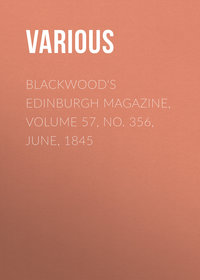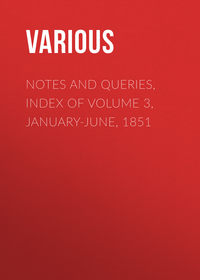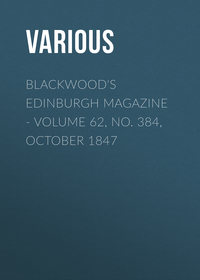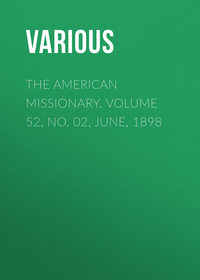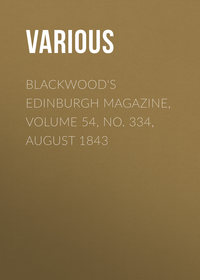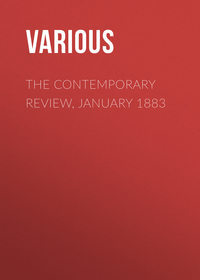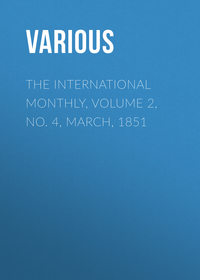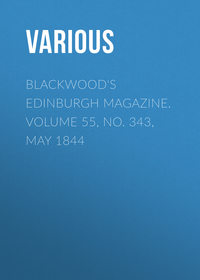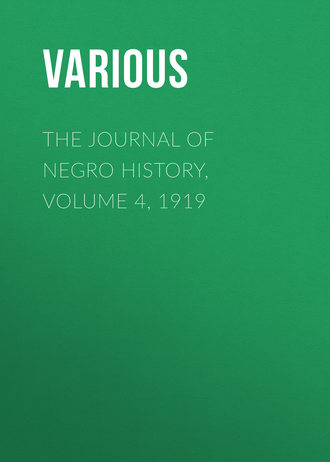 полная версия
полная версияThe Journal of Negro History, Volume 4, 1919
464
Governor Walker of Florida, himself a former slaveholder, said before the State legislature in 1865 that "the world had never seen such a body of slaves, for not only in peace but in war they had been faithful to us. During much of the time of the late unhappy difficulties, Florida had a greater number of men in her army than constituted her entire voting population. This, of course, stripped many districts of their arms-bearing inhabitants and left our females and infant children almost exclusively to the protection of our slaves. They proved true to their trust. Not one instance of insult, outrage, or indignity has ever come to my knowledge. They remained at home and made provisions for the army." John Wallace, Carpet-Bag Rule in Florida, p. 23.
465
"For more than two years, Negroes had been extensively employed in belligerent operations by the Confederacy. They had been embodied and drilled as rebel soldiers and had paraded with white troops at a time when this would not have been tolerated in the armies of the Union."—Greely, The American Conflict, Vol. II, p. 524.
"It was a notorious fact that the enemy were using Negroes to build fortifications, drive teams and raise food for the army. Black hands piled up the sand-bags and raised the batteries which drove Anderson out of Sumter. At Montgomery, the Capital of the Confederacy, Negroes were being drilled and armed for military duty."—W. W. Brown, The Negro in the Rebellion, p. 59.
466
Ibid., Vol. II, p. 521.
467
Jones, A Rebel War Clerk's Diary, Vol. I, p. 237; Schwab, The Confederate States of America, p. 194.
468
Laws of Florida, 12th Session, 1862, Chap. 1378.
469
Confederate War Department, Bureau of Conscription, Circular No. 36, December 12, 1864. Off. Reds. Reb., Series IV, Vol. III, p. 933.
470
Off. Reds. Reb., Series IV, Vol. Ill, p. 780. Journals of Congress, IV, 260.
471
Washington, The Story of the Negro, Vol. II, p. 321.
472
Order No. 426. Adjutant-General's Office, Headquarters Louisiana Militia, March 24, 1862. Cf. Brown, The Negro in the Rebellion, pp. 84-85.
473
Parton, History of the Administration of the Gulf, 1862-1864; General Butler in New Orleans, p. 517.
474
Greely, The American Conflict, p. 521.
475
The Charleston Mercury, January 3, 1861.
476
The announcement of the recruiting read: "Attention, volunteers: Resolved by the Committee of Safety that C. Deloach, D. R. Cook and William B. Greenlaw be authorized to organize a volunteer company composed of our patriotic free men of color, of the city of Memphis, for the service of our common defense. All who have not enrolled their names will call at the office of W. B. Greenlaw & Co."
F. W. Forsythe, Secretary. F. Titus, President.Williams, History of the Negro, Vol. II, p. 277.477
Greely, The American Conflict, Vol. II, p. 521.
478
Memphis Avalanche, September 3, 1861.
479
Greely, The American Conflict, Vol. II, p. 522.
480
Ibid., p. 277.
481
Ibid., Vol. II, p. 522.
482
The Baltimore Traveler, February 4, 1862.
483
Greely, The American Conflict, Vol. II, p. 522.
484
Schwab, The Confederate States of America, p. 193. Moore, Rebellion Records, Vol. VII, p. 210. Jones, Diary, Vol. I, p. 381.
485
An indorsement from the Secretary of War reads: "If all white men capable of bearing arms are put in the field, it would be as large a draft as a community could continuously sustain, and whites are better soldiers than Negroes. For war, when existence is staked, the best material should be used."—Off. Reds. Rebell., Series IV, Vol. III, pp. 693-694.
486
Off. Reds. Rebell., Series IV, Vol. III, p. 799.
487
Ibid., Series IV, Vol. III, p. 846. J. A. Seddon to Maj. E. B. Briggs, Nov. 24, 1864.
488
Ibid., Series IV, Vol. III, p. 1009.
489
Off. Reds. Rebell., Series I, Vol. XXVIII, Pt. 2, p. 13.
490
Ibid., Series I, Vol. LII, Pt. 2, p. 598.
491
Davis, Civil War and Reconstruction in Florida, p. 226.
492
Off. Reds. Rebell., Series IV, Vol. III, pp. 959-960.
493
Ibid., p. 227.
494
Off. Reds. Rebell., Series IV, Vol. III, pp. 1010-1011.
495
Rhodes, History of the United States since the Compromise of 1850, Vol. IV, p. 525.
496
Off. Reds. Rebell., Series IV, Vol. VIII, p. 1110.
497
Off. Reds. Rebell., Series IV, Vol. VIII, p. 1013.
498
Williams, Negro Troops in the War of the Rebellion, Journals of Congress, Vol. IV, pp. 572-573.
In the American Historical Review, January, 1913, N.W. Stephenson has an article upon "The Question of Arming the Slaves." The article is concerned particularly with the debate in the Confederate Congress upon this perplexing question and with the psychology of the statements made by President Davis, Secretary Benjamin, General Lee and by various Congressmen. The author has searched the Journals of the Confederate Congress, newspaper files and personal recollections and gives conclusions which show that "the subject was discussed during the last winter of the Confederate regime," and by inference the dissertation shows that the fear of the consequences of arming the slaves was alike in the minds of all southern people. The treatise is a study in historical psychology; and, as in similar works by men of the type of the author, the point of view of the South and of the Confederacy is presented and the Negro and his actual employment as a soldier is neglected. The author contends that a few southern leaders attempted to force the arming of the blacks upon an unwilling southern public. He neglects the evidence contained in the action of local authorities in arming the Negroes who were free and their attitude concerning those who were slaves. He neglects also the sentiment of southern leaders who favored the measure. The Journals of the Confederate Congress, therefore, will be more valuable to those desiring information concerning the debates on this question.
499
Journal of Congress of Confederate States, Vol. IV, p. 528 and Vol. VII, p. 595; Jones, Diary, Vol. II, p. 431.
500
Richmond Dispatch, February 24, 1865; Jones Diary, Vol. II, p. 432.
501
Journal of Congress of Confederate States, Vol. VII, p. 748.
502
Richmond Examiner, December 9, 1864—Gov. Smith's Message. Jones, Diary, Vol. II, p. 43; pp. 432-433. Schwab, The Confederate States of America, p. 194.
503
Off. Reds. Rebell., Series IV, Vol. III, p. 1161.
Ibid., Series III, Vol. V, pp. 711-712; Davis, Confederate Government, Vol. II, p. 660.
504
Rhodes, History of U. S., Vol. V, 1864-1865, p. 81.
505
Off. Reds. Rebell., Series IV, Vol. III, pp. 1193-1194 and Appendix.
506
Cf. Southern Correspondence throughout the Rebellion Records.
507
Compendium, U. S. Census (1870), pp. 13-15.
508
The Nashville American, "City of Nashville" booklet, p. 20.
509
Garrett and Goodpasture, History of Tennessee, pp. 249 sqq.
510
Ibid., pp. 245-246.
511
Proceedings of the Anti-Slavery Convention, London, 1843.
512
Ibid., p. 300.
513
See paper of E. E. Hoss, Tenn. Hist. Soc., Nashville.
514
Greely, Horace, The American Conflict, p. 79, New York, 1864.
515
Journal of The Constitutional Convention, State of Tennessee, 1834.
516
Journal of Constitutional Convention, 1834.
517
Haywood and Cobb, Statute Laws of Tenn., 1779, Ch. 5.
518
Ibid., 1741, Ch. 21.
519
Ibid., 1788, Ch. 7.
520
Ibid., 1799, Ch. 9.
521
R. T. Q., Jr., State Archives, Capitol Library, Tennessee.
522
This is most natural, of course, but is inserted to emphasize the absolute quality of ownership, for the master was held responsible for the deed just as if he himself had committed it, and the slaves were morally irresponsible. But for other breaches of social good conduct the slave was the direct victim of the penalty, thus at once being slave and man, property and human being.
523
Statute Laws of Tenn., 1819, Chap. 35.
524
Acts, 2d Session Gen. Assembly (Knoxville), 1809.
525
Statute Laws, 1813, Chap. 135.
526
Ibid., 1826, Ch. 22, Sec. 1.
527
Ibid., 1801, Ch. 27, Sec. 1.
528
Acts of Gen. Assembly (Tenn.), 1822, Ch. 102.
529
Cf. 1 and 2.
530
Statute Laws, 1831, Ch. 102, Sec. 2.
531
Ibid., Sec. 2.
532
Statute Laws, 1826, Ch. 22, Sec. 6.
533
Ibid., 1741, Ch. 24, Sec. 23.
534
Proceedings of the Anti-Slavery Convention, London, 1843.
535
Acts of the Gen. Assembly, Tennessee, 1821, Chap. 26.
536
Statute Laws, Tenn., Chap. 6, Sec. 2. Laws of 1787.
537
Statute Laws, Tenn., Chap. 6, Sec. 2, Laws of 1787.
538
Ibid., 1833, Chap. 4, Sec. 1.
539
Tenn. Constitutional Convention Journal, 1834.
540
Tenn. Constitutional Convention Journal, pp. 31-40.
541
Ibid., p. 53.
542
Southern Statesman (clipping from Knoxville Register, Oct., 1831).
543
Tenn. Constitutional Convention Journal, 1834, pp. 102-104.
544
Ibid., pp. 125-126.
545
Journal Const. Conv., op. cit., pp. 214 et seq.
546
Tennessee Constitutional Journal, 1834, pp. 126 et seq.
547
Ibid., pp. 184 et seq.
548
Ibid., p. 200, p. 209.
549
Constitution of Tenn., 1834, Art. 3, Sec. 1.
550
Code of Tenn. '57, '58, Sec. 3809.
551
Stephenson, Race Distinctions in American Law, p. 284. Tenn. Const. Conv. Journal, 1834, op. cit., p. 209.
552
Bureau of the Census, "A Century of Pop. Growth," p. 82. Washington, 1909.
553
Acts of Tenn., 1846, Chap. 47 (Nicholson).
554
Code of 1858, Tenn., Art. IV, See. 2725.
555
Ibid., Sec. 2725.
556
Ibid., Sec. 2728.
557
Nicholson, Acts of Tenn., 1846, Chap. 191, Sec. 1.
558
Code of Tenn., op. cit., Sec. 2714.
559
Ibid., Sec. 2793-2794. Cf. Statute Laws here.
560
Statute Laws, Tenn., 1846, Ch. 191.
561
Brackett, "The Negro in Maryland," Johns Hopkins Studies, Ch. V, p. 191.
562
Ibid., pp. 191-192.
563
Personal Testimony, B. S.; J. P. Q. E.; E. S. M. Nashville, 1912.
564
{Transcriber's Note: Missing footnote text in original.}
565
I discharge a duty in disclosing to the public the names of the persons to whom I am indebted for the biography of this estimable African, concerning whom Dr. Gall was the first to speak to me. Upon the request of my fellow-citizens, D'Hautefort, attaché to the embassy, and Dudon, First Secretary to the French legation in Austria, they hastened to satisfy my curiosity. Two estimable ladies of Vienna, Mme. Stief and Mme. Picler, worked at it with great zeal. All the details furnished by the defunct Angelo's friends were carefully collected. From this material has been written the interesting account which follows. In the French translation it loses in delicacy of style, for Mme. Picler, who wrote it down in German, possesses the rare talent of writing equally well in prose and in poetry. I take great pleasure in expressing to these kind persons my just gratitude.
566
Collected under the direction of Emmett J. Scott.
567
A very good account of C. B. Ray's literary efforts is given in I. Garland Penn's The Afro-American Press, pp. 32-47.
568
Papers in the possession of Ray's family.
569
For further information see manuscripts in the possession of Ray's family.
570
This convention movement is well treated in J. W. Cromwell's The Negro in American History, pp. 27-46.
571
Penn, The Afro-American Press, p. 35.
572
Brown, The Rising Son, p. 473.
573
Penn, The Afro-American Press, p. 38.
574
Penn, The Afro-American Press, pp. 39-40.
575
Ibid., p. 41.
576
Penn, The Afro-American Press, pp. 42-43.
577
Penn, The Afro-American Press, pp. 43-46.
578
From papers in the possession of Ray's family.
579
These letters are in the possession of the author.
580
This paper has appeared in Transactions of the Royal Society of Canada, May, 1919.
581
Per Hargrave arguendo, Somerset v. Stewart (1772), Lofft 1, at p. 4; the speech in the State Trials Report was never actually delivered.
582
(1772) Lofft 1; (1772) 20 St. Trials 1.
583
These words are not in Lofft or in the State Trials but will be found in Campbell's Lives of the Chief Justices, Vol. II, p. 419, where the words are added: "Every man who comes into England is entitled to the protection of the English law, whatever oppression he may heretofore have suffered and whatever may be the colour of his skin. 'Quamvis ille niger, quamvis tu candidus esses'" and certainly Vergil's verse was never used on a nobler occasion or to nobler purpose. Verg. E. 2, 19.
William Cowper in The Task, written 1783-1785, imitated this in his well-known lines:
"Slaves cannot breathe in England; if their lungsReceive our air, that moment they are free.They touch our country and their shackles fall."584
I use the spelling in Lofft; the State Trials and Lord Campbell have "Somersett" and "Steuart."
585
See, e. g., Vinogradoff, Villeinage in England, passim; Hallam's Middle Ages (ed. 1827), Vol. 3, p. 256; Pollock & Maitland, History of English Law, Vol. 1, pp. 395 sqq. Holdsworth's History of English Law, Vol. 2, pp. 33, 63, 131; Vol. 3, pp. 167, 377-393.
586
See Pollock & Maitland's History Eng. Law, Vol. 1, pp. 1-13, 395, 415; Holdworth's Hist. Eng. Law, Vol. 2, pp. 17, 27, 30-33, 131, 160, 216.
587
"So spake the fiend and with necessity,The tyrant's plea, excused his devilish deeds."Paradise Lost, Bk. 4, ll. 393, 394.Milton a true lover of freedom well knew the peril of an argument based upon supposed necessity. Necessity is generally but another name for greed or worse.
588
E. g., the Statute of (1732) 5 Geo. II, C. 7, enacted, sec. 4, "that from and after the said 29th. September, 1732, the Houses, Lands, Negroes and other Hereditaments and real Estates situate or being within any of the said (British) Plantations (in America) shall be liable" to be sold under execution. Note that the Negroes are "Hereditaments and Real Estate."
589
The name Pani or Panis, Anglicized into Pawnee, was used generally in Canada as synonymous with "Indian Slave" because these slaves were usually taken from the Pawnee tribe. Those who would further pursue this matter will find material in the Wisconsin Historical Collections, Vol. XVIII, p. 103 (note); Lafontaine, L'Esclavage in Canada cited in the above; Michigan Pioneer and Historical Collections, Vol. XXVII, p. 613 (n); Vol. XXX, pp. 402, 596. Vol. XXXV, p. 548; Vol. XXXVII, p. 541. From Vol. XXX, p. 546, we learn that Dr. Anthon, father of Prof. Anthon of Classical Text-book fame, had a "Panie Wench" who when the family had the smallpox "had them very severe" along with Dr. Anthon's little girl and his "aeltest boy" "whoever they got all safe over it and are not disfigured."
Dr. Kingsford in his History of Canada, Vol. V, p. 30 (n), cites from the Documents of the Montreal Historical Society, Vol. I, p. 5, an "ordonnance au sujet des Nègres et des sauvages appelés panis, du 15 avril 1709" by "Jacques Raudot, Intendant." "Nous sous le bon plaisir de Sa Majesté ordonnons, que tous les Panis et Nègres qui ont été achetés et qui le seront dans la suite, appartiendront en pleine proprieté a ceux qui les ont achetés comme étant leurs esclaves." "We with the consent of His Majesty enact that all the Panis and Negroes who heretofore have been or who hereafter shall be bought shall be the absolute property as their slaves of those who bought them." This ordinance is quoted (Mich. Hist. Coll., XII, p. 511), and its language ascribed to a (nonexistent) "wise and humane statute of Upper Canada of May 31, 1798"—a curious mistake, perhaps in copying or printing.
There does not seem to have been any distinction in status or rights or anything but race between the Panis and the other slaves. I do not know of an account of the numbers of slaves in Canada at the time; in Detroit, March 31, 1779, there were 60 male and 78 female slaves in a population of about 2,550 (Mich. Hist. Coll., X, p. 326); Nov. 1, 1780, 79 male and 96 female slaves in a somewhat smaller population (Mich. Hist. Coll., XIII, p. 53); in 1778, 127 in a population of 2,144 (Mich. Hist. Coll., IX, p. 469); 85 in 1773, 179 in 1782 (Mich. Hist. Coll., VII, p. 524); 78 male and 101 female (Mich. Hist. Coll., XIII, p. 54). The Ordinance of Congress July 13, 1787, forbidding slavery "northwest of the Ohio River" (passed with but one dissenting voice, that of a Delegate from New York) was quite disregarded in Detroit (Mich. Hist. Coll., I, 415); and indeed Detroit and the neighboring country remained British (de facto) until August, 1796, and part of Upper Canada from 1791 till that date.
590
This Act (1790) 30 Geo. III, c. 27, was intended to encourage "new settlers in His Majesty's Colonies and Plantations in America" and applied to all "subjects of the United States." It allowed an importation into any of the Bahama, Bermuda or Somers Islands, the Province of Quebec (then including all Canada), Nova Scotia and every other British territory in North America. It allowed the importation by such American subjects of "negros, household furniture, utensils of husbandry or cloathing free of duty," the "household furniture, utensils of husbandry and cloathing" not to exceed in value £50 for every white person in the family and £2 for each negro, any sale of negro or goods within a year of the importation to be void.
591
The Royal Proclamation is dated 7th October, 1763; it will be found in Shortt & Doughty, Documents relating to the Constitutional History of Canada published by the Archives of Canada, Ottawa, 1907, pp. 119 sqq. The Proclamation fixes the western boundary of the (Province or) Government at a line drawn from the south end of Lake Nipissing to where the present international boundary crosses the River St. Lawrence.
The Quebec Act is (1774) 14 Geo. III, C. 83. It extends Quebec south to the Ohio and west to the Mississippi; Shortt & Doughty, pp. 401 sqq.
592
The division of the Province of Quebec into two provinces, i. e., Upper Canada and Lower Canada, was effected by the Royal Prerogative, Sec. 31 George III, c. 31, the celebrated Canada of Constitutional Act. The Message sent to Parliament expressing the Royal intention is to be found copied in the Ont. Arch. Reports for 1906, p. 158. After the passing of the Canada Act, an Order in Council was passed August 24, 1791 (Ont. Arch. Rep., 1906, pp. 158 et seq.), dividing the Province of Quebec into two provinces and under the provisions of sec. 48 of the act directing a royal warrant to authorize the Governor or Lieutenant-Governor of the Province of Quebec or the person administering the government there, to fix and declare such day as he shall judge most advisable for the commencement of the effect of the legislation in the new provinces not later than December 31, 1791. Lord Dorchester (Sir Guy Carleton) was appointed, September 12, 1791, Captain General and Governor-in-Chief of both provinces and he received a Royal warrant empowering him to fix a day for the legislation becoming effective in the new provinces (Ont. Arch. Rep., 1906, p. 168). In the absence of Dorchester, General Alured Clarke, Lieutenant Governor of the Province of Quebec, issued November 18, 1791, a proclamation fixing Monday, December 26, 1791, as the day for the commencement of the said legislation (Ont. Arch. Rep., 1906, pp. 169-171). Accordingly technically and in law, the new province was formed by Order in Council, August 24, 1791, but there was no change in administration until December 26, 1791.




